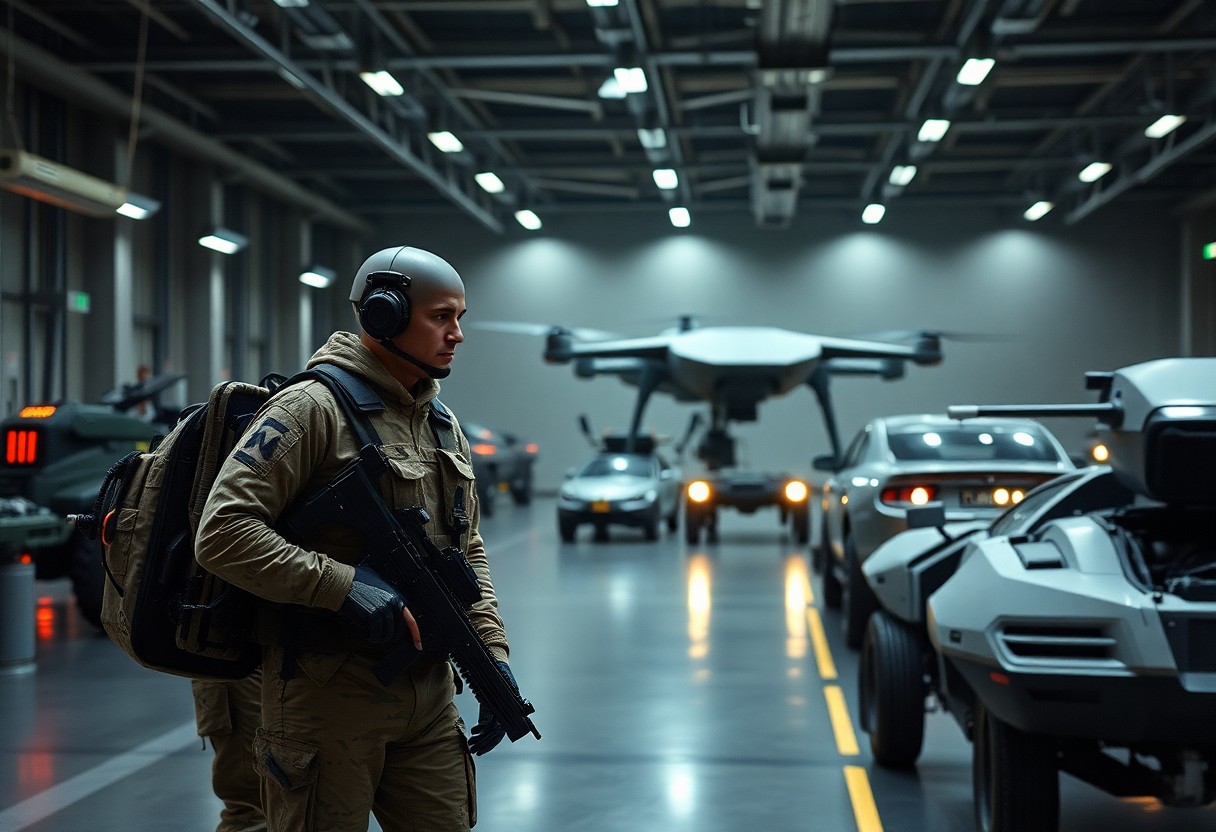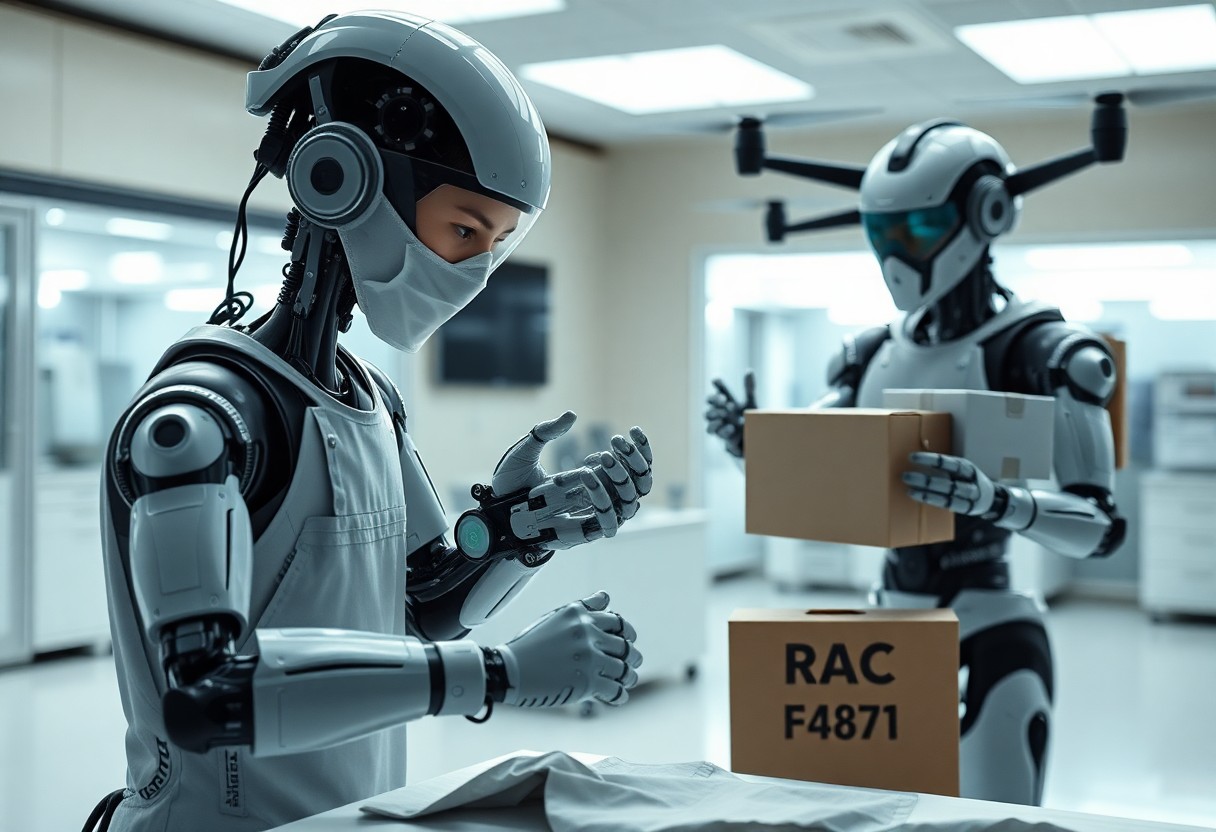Many nations are investing heavily in robotic technology to modernize their military forces, and it’s vital for you to understand how these advancements will shape the battlefield of tomorrow. As automated systems and artificial intelligence become integral to defense strategies, militaries worldwide are devising training programs that equip soldiers with the skills necessary to operate and collaborate with advanced machines. This blog post will explore various approaches being taken globally to ensure that your future military personnel are ready to engage in this new era of warfare.
The Evolution of Military Robotics
Before the integration of robotics into military operations, conventional warfare relied heavily on human effort and traditional machinery. The dawn of the digital age opened pathways for new technologies, leading to innovations that drastically altered both strategy and battlefield dynamics. Your understanding of modern military strategy must include the role of robotics, which continues to evolve and shape the future of combat.
Historical Context
One significant moment in the history of military robotics came during World War II when rudimentary remote-controlled devices began to emerge. These early examples laid the foundation for your comprehension of how combat has transformed over the decades, evolving from basic automation to cutting-edge robotic systems designed for surveillance, reconnaissance, and even direct combat.
Technological Advancements
To grasp the current landscape of military robotics, you must acknowledge the significant strides in technology over recent years. Advancements in artificial intelligence, machine learning, and sensor technology have enabled the development of autonomous systems capable of complex decision-making, enhancing operational efficiency and safety on the battlefield.
Another area of growth is in the miniaturization of technology, which has allowed for the deployment of smaller, more agile robotic units, often referred to as “micro-drones.” These units can gather intelligence in environments that would be perilous for human soldiers. As military strategies integrate these innovations into their training and strategic planning, your understanding of warfare and its future will become increasingly rooted in the capabilities of robotics.
Current Robotics in Military Operations
It is evident that robotics are increasingly being integrated into military operations across the globe. These advancements allow for enhanced efficiency, improved reconnaissance, and safer missions. As countries invest in studies and programs focused on the automation of military tasks, you can see that the landscape of warfare is evolving, shaping the future of defense strategies worldwide.
Drones and Unmanned Systems
Against the backdrop of modern warfare, drones and unmanned systems have emerged as pivotal tools, enabling forces to conduct surveillance, engage targets, and gather intelligence without putting personnel at risk. You may recognize the significant advantages these technologies bring, particularly in their ability to operate in hostile environments and perform complex missions autonomously, revolutionizing traditional combat roles.
Ground Robotics and Autonomous Vehicles
Against the pressing demands for safer and more efficient military operations, ground robotics and autonomous vehicles are making a noticeable impact, offering support in logistics, reconnaissance, and combat roles. These systems facilitate the transportation of supplies and personnel, thereby reducing the risks posed to human soldiers while enhancing operational capability. You might find the versatility of these vehicles appealing, as they adapt to a variety of terrains and mission requirements.
At the forefront of military innovation, ground robotics and autonomous vehicles are enhancing operational effectiveness and transforming battlefield dynamics. By utilizing cutting-edge technology, these machines can carry out tasks from transporting cargo to conducting reconnaissance missions, significantly a thorough understanding of enemy situations. These advancements not only improve efficiency but also contribute to mission success while ensuring the safety of personnel in challenging environments. As you explore this landscape, keep in mind how these technologies continue to evolve, shaping the future of military strategy.
Training Protocols for Robotic Integration
If you’re looking at the future of military capabilities, training protocols for robotic integration are important. These protocols are designed to ensure that personnel are well-equipped to work alongside advanced technologies. This means developing skills in both operating and maintaining robotic systems while also understanding their strategic applications on the battlefield. Investing in comprehensive training will allow your forces to maximize the advantages that robotics offer in various operational scenarios.
Simulation and Virtual Reality Training
Simulation and virtual reality training provides immersive environments where you can practice skills without the risks of live deployment. These technological tools allow for repeated drills and real-time feedback, ensuring you can familiarize yourself with robotic systems in a safe yet realistic setting. By utilizing these advanced training methods, you enhance your ability to make decisions quickly and effectively when faced with robotic integration in challenging scenarios.
Live Exercises with Robotic Systems
Exercises involving live robotic systems are designed to give you hands-on experience with the technologies you will encounter in the field. These practical applications enable you to test your skills in realistic scenarios, reinforcing the principles learned through simulations and virtual training.
Live exercises with robotic systems create an engaging and dynamic training atmosphere where you can collaborate with robots in executing complex missions. As you work alongside these systems, you will develop a better understanding of their capabilities, limitations, and tactical deployment. This experience is vital for building trust between human operators and robots, ensuring you can effectively coordinate efforts in various challenging operational environments.
Global Perspectives on Military Robotics
Once again, the global landscape of military robotics is evolving rapidly, with nations recognizing the need for advanced technologies to enhance their defense strategies. As artificial intelligence and automation become integral to modern warfare, countries are investing heavily in research and development, creating a diverse array of robotic systems. This not only promises to reshape how conflicts are managed but also how international relations are navigated, as nations strive to maintain a balance of power in the robotic arms race.
Leading Nations in Robotic Development
To stay ahead in military robotics, several nations have emerged as leaders in development and innovation. The United States, China, and Russia are at the forefront, with substantial investments in robotic technologies for surveillance, logistics, and combat systems. By leveraging cutting-edge artificial intelligence, these nations aim to increase operational efficiency and decrease the risks faced by human soldiers on the battlefield.
Collaborative Efforts and International Standards
For the advancement of military robotics to be effective, collaboration among nations is important, alongside the establishment of international standards. Such efforts promote interoperability and ensure that ethical considerations are taken into account when deploying robotic systems in military operations.
And as international tensions rise, collaborative efforts become even more vital. Nations must work together to create frameworks that govern the use of military robotics, addressing issues such as accountability and ethical deployment. This would not only foster trust among allied countries but also pave the way for joint missions involving robotic capabilities, enhancing overall security and stability in a complex global landscape. Your understanding of these dynamics can help inform your perspective on the future of warfare and military technology.
Ethical Considerations in Military Robotics
After the rapid advancement of robotic technologies, military ethics have become a focal point in discussions surrounding their implementation. You must consider the moral implications of utilizing robots in warfare, including the potential consequences of automated decision-making and how it affects human accountability. This exploration emphasizes the necessity for stringent regulations, ensuring that your military engagements uphold humanitarian principles while adapting to technological advancements.
Autonomous Weapons and Decision-Making
Beside the operational efficiency that autonomous weapons offer, their capacity to make life-and-death decisions raises significant ethical concerns. You need to contemplate whether machines can be entrusted to engage targets without human intervention, and how such decisions may impact your understanding of warfare’s moral landscape.
Accountability and Human Oversight
One pivotal issue in military robotics is the accountability for actions taken by autonomous systems. You should reflect on who bears responsibility when a robotic system causes unintended harm or engages in unlawful acts during conflict. Striking a balance between technological use and human oversight is important to uphold ethical standards in military operations.
In addition to defining accountability, you must understand the importance of human oversight in the deployment of robotic systems. Ensuring that a human operator remains in control helps to mitigate risks associated with autonomous decision-making. By integrating strict protocols that require human intervention in critical situations, your military strategies can promote ethical practices while harnessing the benefits of advanced robotics in warfare.
Future Trends in Military Robotics
To understand the direction in which military robotics is headed, it’s important to explore how advancements in artificial intelligence, machine learning, and autonomous systems are reshaping military strategies. As nations invest in these technologies, you will witness an evolution in combat capabilities, enhancing operational efficiency and effectiveness in scenarios that demand rapid decision-making and precision.
Innovations on the Horizon
Above the current landscape, emerging technologies promise significant enhancements in military operations. Innovations such as swarming drones, enhanced AI algorithms, and advanced sensor systems are set to redefine how militaries deploy and utilize robotic assets. These advancements will allow you to engage in more complex missions with increased adaptability and intelligence.
Impacts on Warfare and Strategy
About the effects of robotics on warfare, you will find that they will fundamentally alter traditional combat dynamics. The integration of robotic systems will enable forces to conduct operations with reduced human risk and increased mission success rates, ultimately changing the way strategies are formulated.
Considering the evolving nature of warfare, the impacts of robotic systems extend beyond mere efficiency; they challenge existing military doctrines and strategic frameworks. You must acknowledge that as robots take on more roles on the battlefield, the emphasis will likely shift towards cyber warfare and electronic warfare tactics. Moreover, integrating human decision-making with robotic execution will create a hybrid approach to combat, requiring you to adapt your understanding of battlefield command and control.
Final Words
Now that you have explored how militaries worldwide are gearing up for a robotic future, it’s clear that your understanding of advanced technologies is crucial. As emerging trends transform warfare, being informed about the integration of robotics in military training can enhance your perspective on global security challenges. Embracing this knowledge will equip you to engage in discussions on technology’s role in defense and the implications for future generations. Your awareness will enable you to navigate a world increasingly defined by robotic and automated systems.






